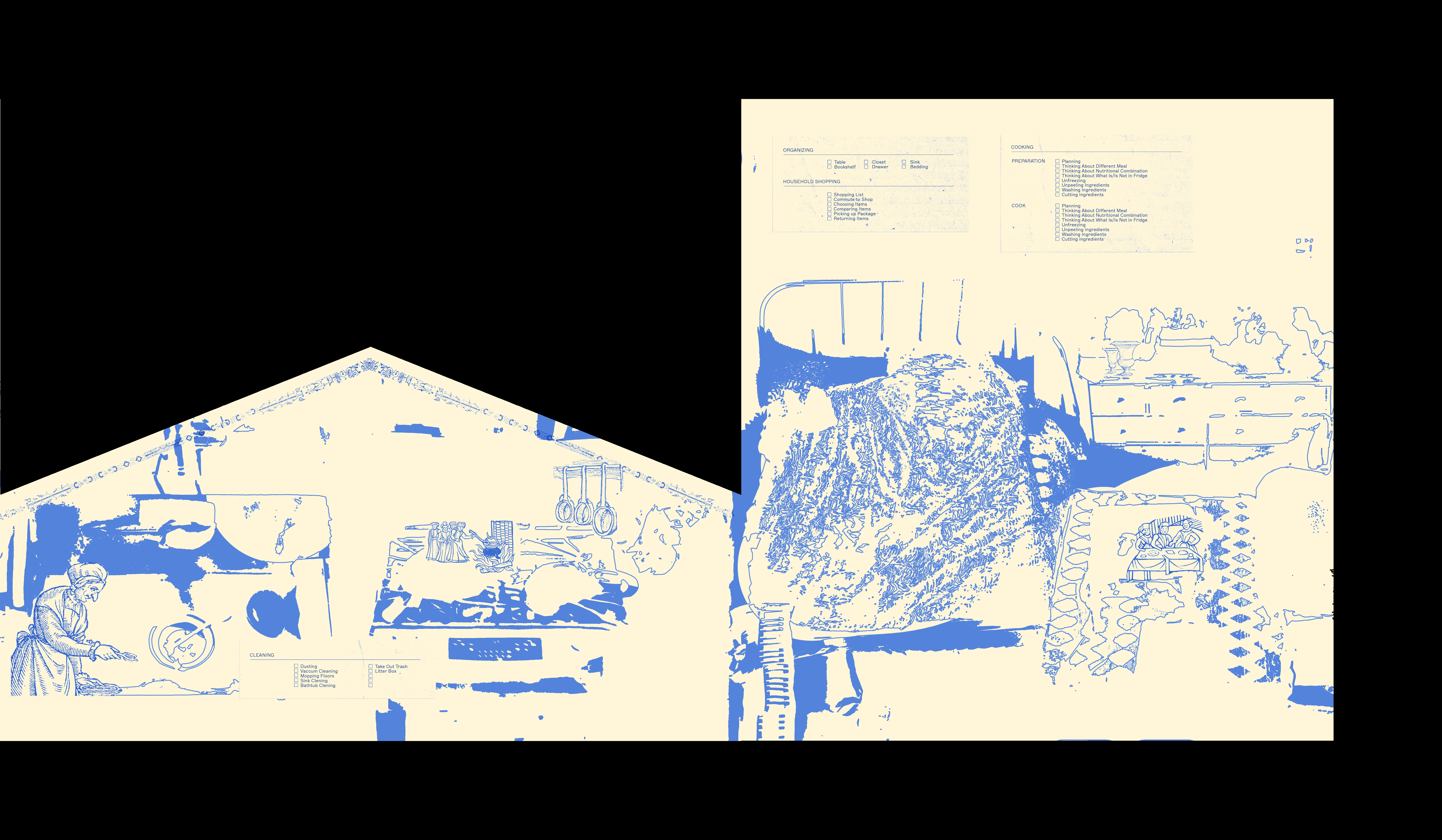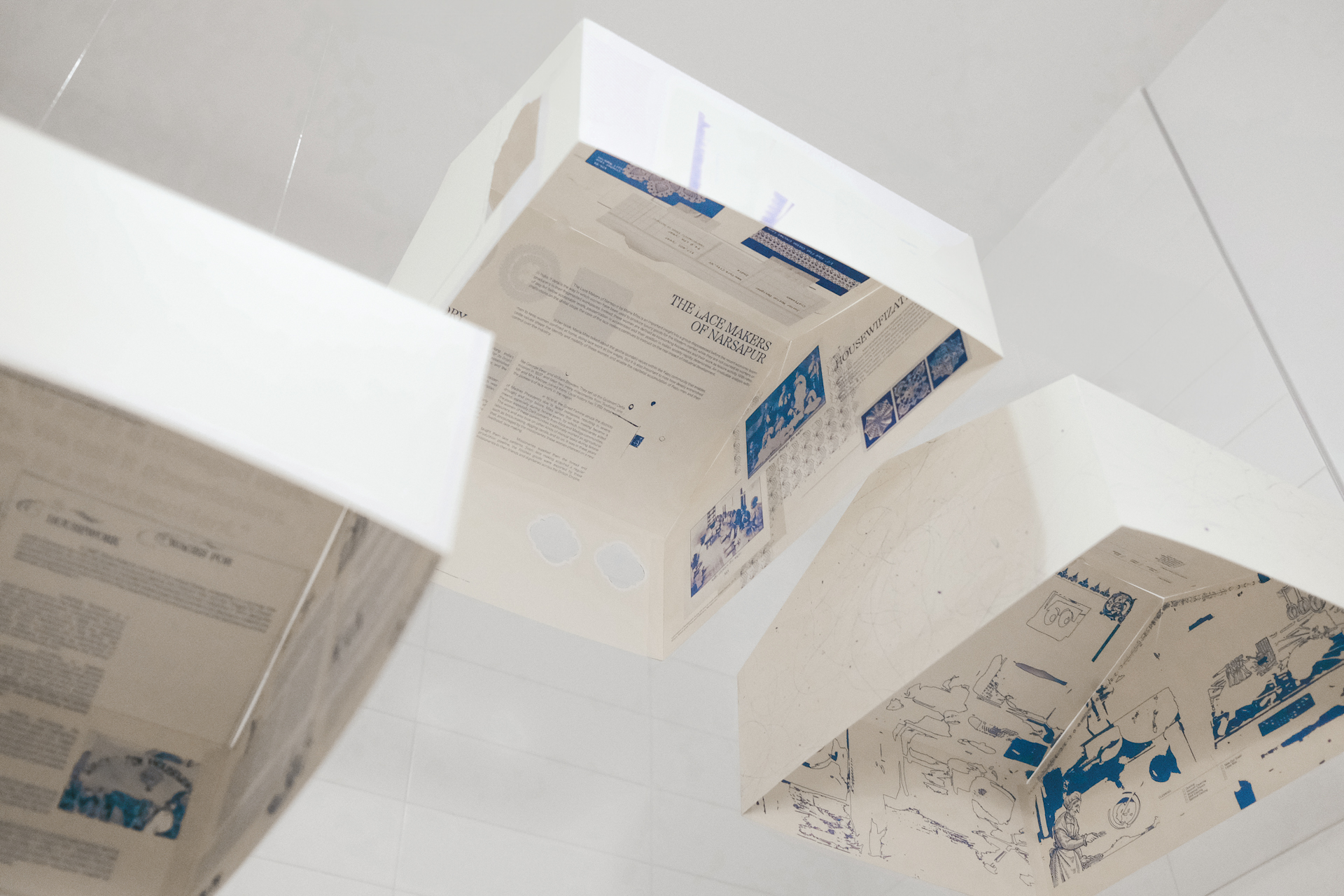
3 ROOMS
Three room-shaped books explore the social and economic
conditions affecting women within domestic spaces.
Experimental Book Design
Three room-shaped books explore the social and economic
conditions affecting women within domestic spaces.
Experimental Book Design
In A Room of One's Own, Woolf writes that writers, not just women, need a minimum of material security to be able to work (create) and think without interference. Ideally, every woman should have an annual income of five hundred pounds (equivalent to the salary of a well-to-do middle-class male at the time), and then, the well-known condition of having a room of one's own.
Inspired by Woolf, Three Rooms explore the social and economic conditions affecting women within domestic spaces. Despite the seemingly private and tranquil nature of these living spaces, power dynamics and gender roles persist. Men excel at work but often neglect household chores due to entrenched societal perceptions and structures. Housework is devalued as "non-work," lacking inherent worth. Additionally, the division of labor confines women to the traditional role of housewife, a concept elucidated by Mies Maria as housewifization. Under capitalist patriarchy, female labor is treated as an easily accessible, natural resource. This project unveils the implications of these dynamics on gender roles and power structures in contemporary society.
Inspired by Woolf, Three Rooms explore the social and economic conditions affecting women within domestic spaces. Despite the seemingly private and tranquil nature of these living spaces, power dynamics and gender roles persist. Men excel at work but often neglect household chores due to entrenched societal perceptions and structures. Housework is devalued as "non-work," lacking inherent worth. Additionally, the division of labor confines women to the traditional role of housewife, a concept elucidated by Mies Maria as housewifization. Under capitalist patriarchy, female labor is treated as an easily accessible, natural resource. This project unveils the implications of these dynamics on gender roles and power structures in contemporary society.
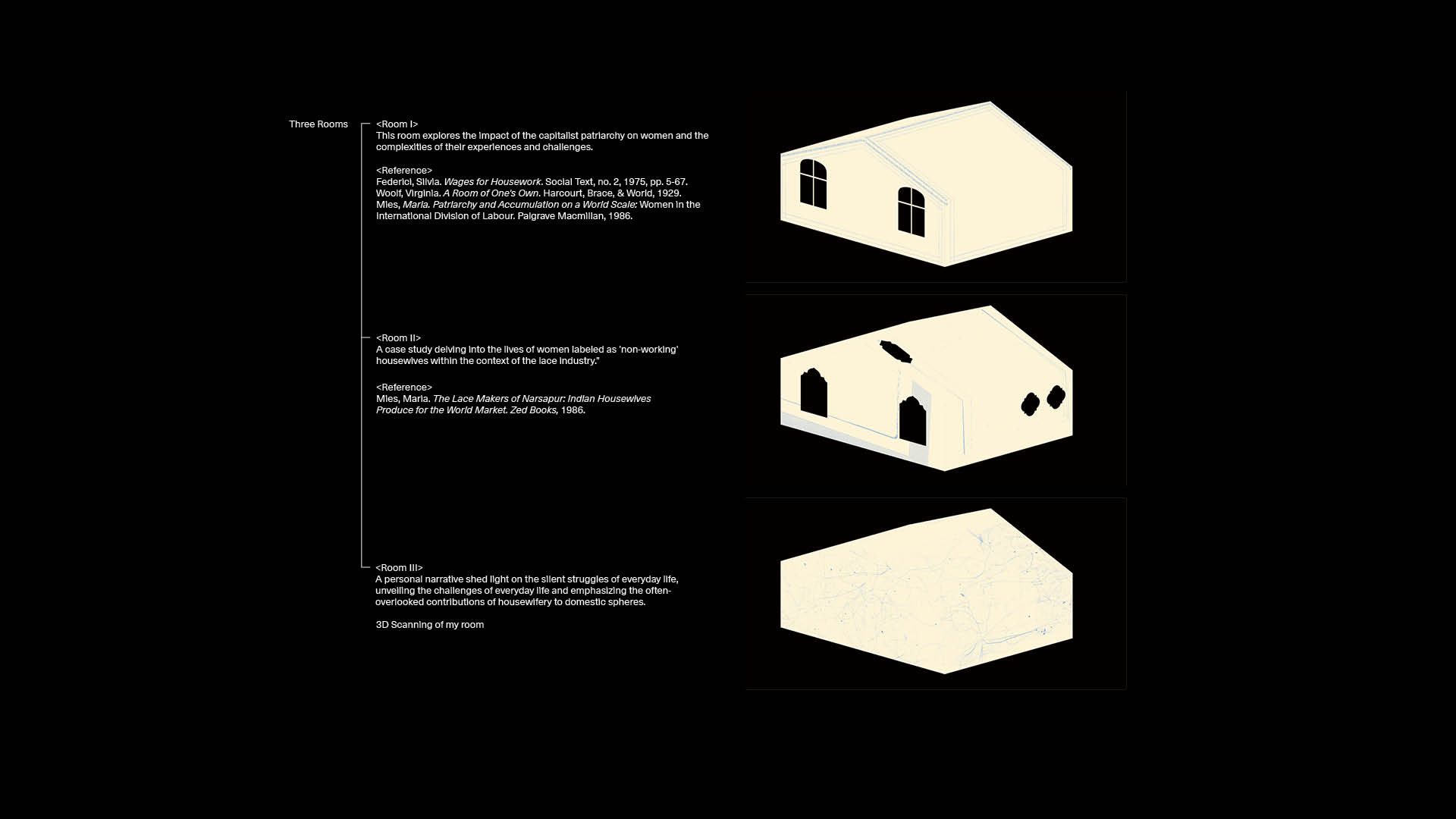
<ROOM I>
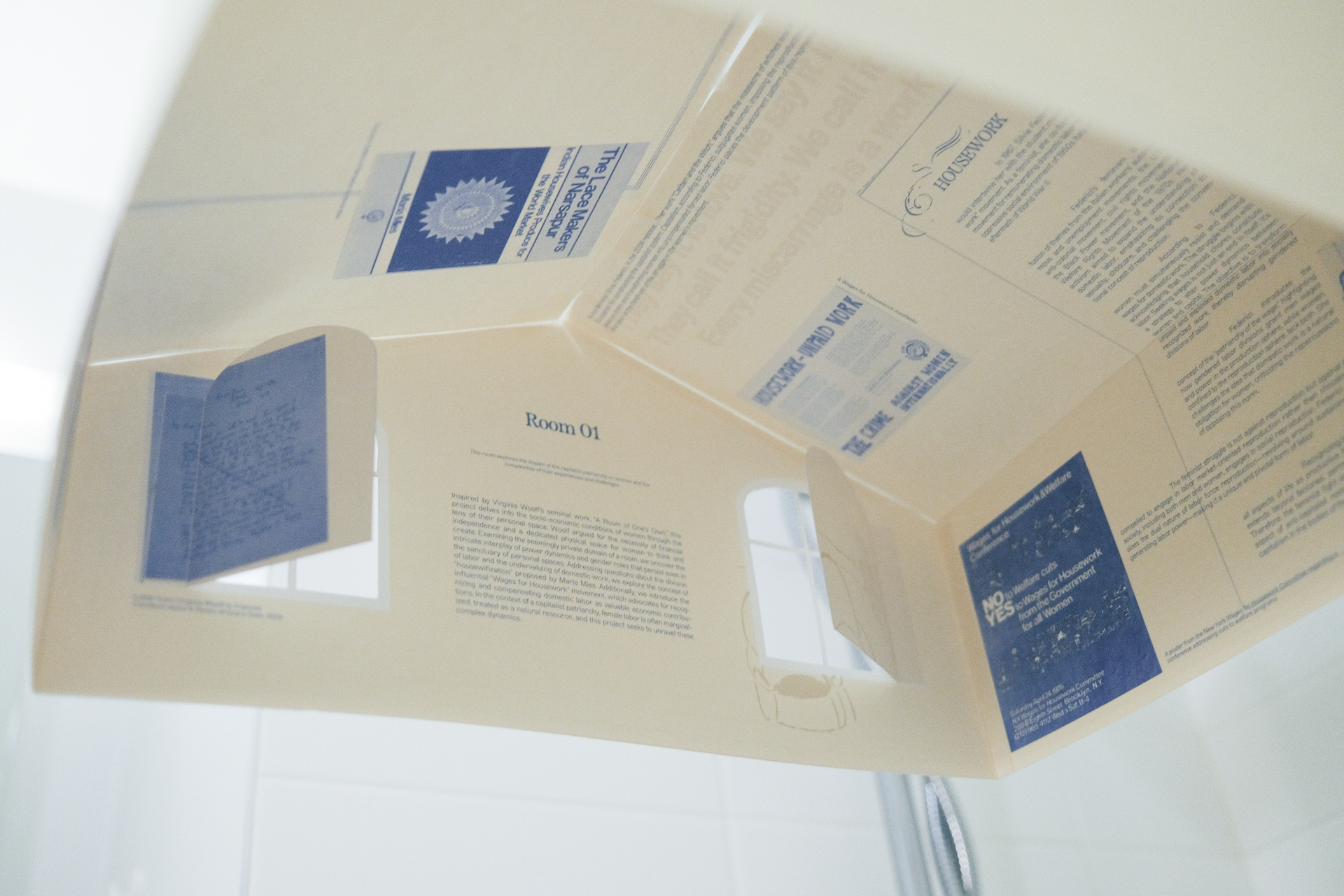
<ROOM I>
This room explores the impact of the capitalist patriarchy on women and the complexities of their experiences and challenges.
Room I delves into the socio-economic conditions of women through the lens of their personal space. Woolf argued for the necessity of financial independence and a dedicated physical space for women to think and create. Examining the seemingly private domain of a room, we uncover the intricate interplay of power dynamics and gender roles that persist even in the sanctuary of personal spaces. Addressing questions about the division of labor and the undervaluing of domestic work, we explore the concept of "housewifization" proposed by Maria Mies. Additionally, we introduce the influential "Wages for Housework" movement, which advocates for recognizing and compensating domestic labor as valuable economic contributions. In the context of a capitalist patriarchy, female labor is often marginalized, treated as a natural resource, and this project seeks to unravel these complex dynamics.
This room explores the impact of the capitalist patriarchy on women and the complexities of their experiences and challenges.
Room I delves into the socio-economic conditions of women through the lens of their personal space. Woolf argued for the necessity of financial independence and a dedicated physical space for women to think and create. Examining the seemingly private domain of a room, we uncover the intricate interplay of power dynamics and gender roles that persist even in the sanctuary of personal spaces. Addressing questions about the division of labor and the undervaluing of domestic work, we explore the concept of "housewifization" proposed by Maria Mies. Additionally, we introduce the influential "Wages for Housework" movement, which advocates for recognizing and compensating domestic labor as valuable economic contributions. In the context of a capitalist patriarchy, female labor is often marginalized, treated as a natural resource, and this project seeks to unravel these complex dynamics.
Federici, Silvia. Wages for Housework. Social Text, no. 2, 1975, pp. 5-67.
Woolf, Virginia. A Room of One's Own. Harcourt, Brace, & World, 1929.
Mies, Maria. Patriarchy and Accumulation on a World Scale: Women in the International Division of Labour. Palgrave Macmillan, 1986.
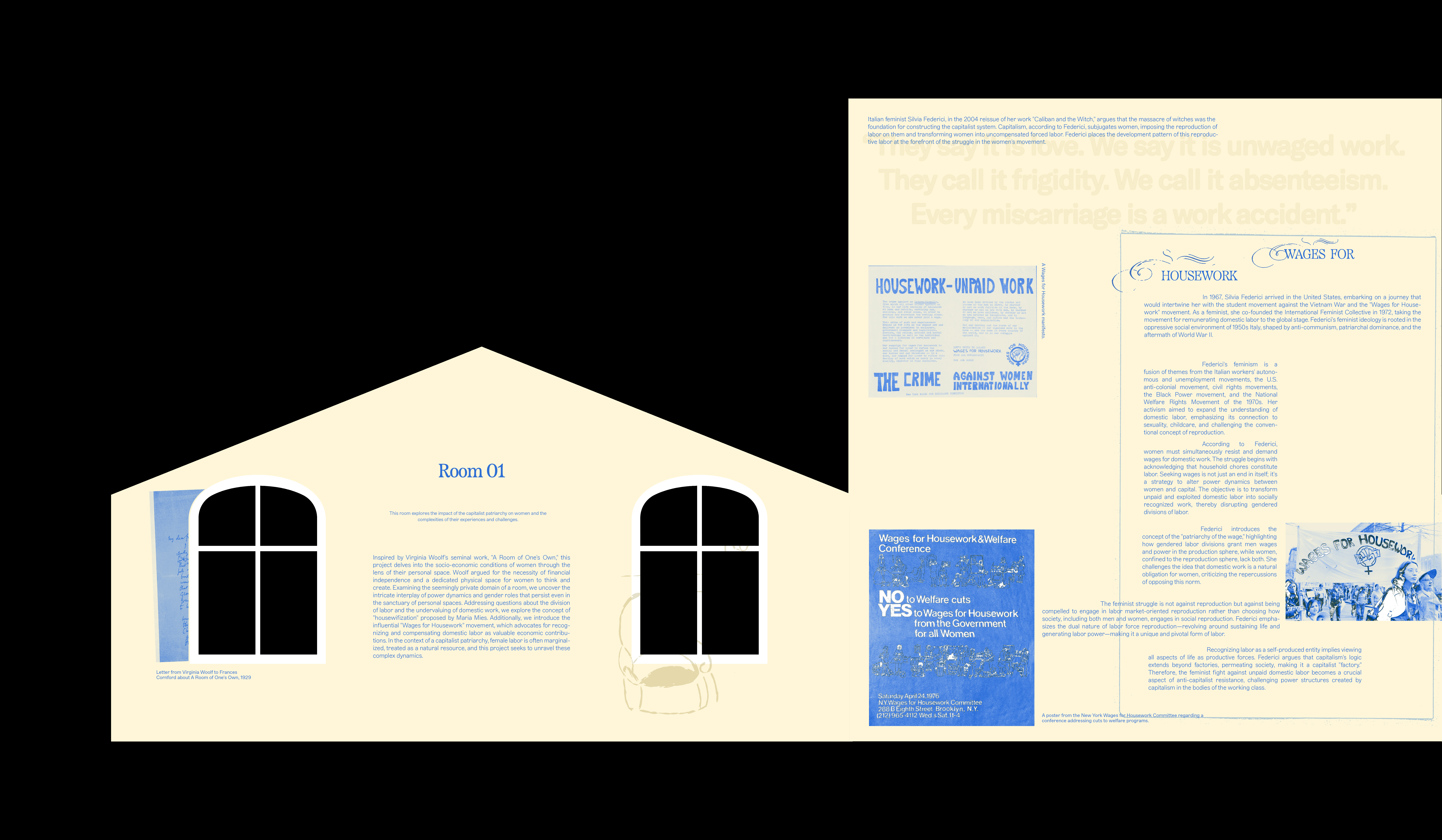
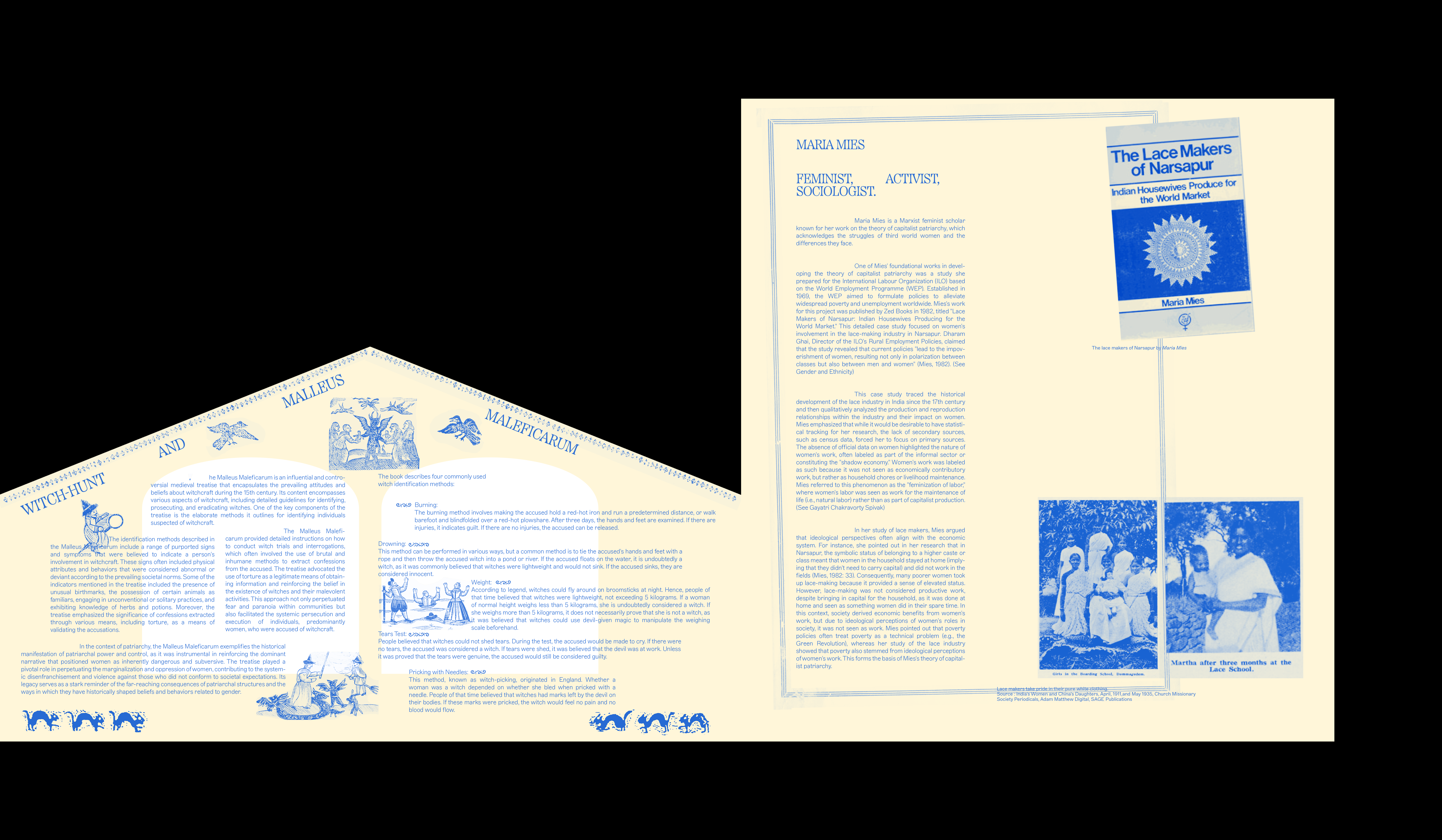
*Inside the Room
Fully opened: 54"x13"


<ROOM II>
A case study delving into the lives of women labeled as 'non-working' housewives within the context of the lace industry."
Drawing from Maria Mies's influential study on "non-working" housewives in Narsapur, India, Room II focuses on the devaluation of individuals engaged in socially unvalued work. The study traces the historical evolution of the lace industry in India, qualitatively analyzing the production-reproduction relations within the industry and their impact on women. Mies's research underscores the challenges of obtaining accurate data due to the informal nature of women's work, often relegated to the "shadow economy." Through this case study, we explore how the devaluation of such work is intrinsic to the functioning of capitalism and its intersections with globalization.
A case study delving into the lives of women labeled as 'non-working' housewives within the context of the lace industry."
Drawing from Maria Mies's influential study on "non-working" housewives in Narsapur, India, Room II focuses on the devaluation of individuals engaged in socially unvalued work. The study traces the historical evolution of the lace industry in India, qualitatively analyzing the production-reproduction relations within the industry and their impact on women. Mies's research underscores the challenges of obtaining accurate data due to the informal nature of women's work, often relegated to the "shadow economy." Through this case study, we explore how the devaluation of such work is intrinsic to the functioning of capitalism and its intersections with globalization.
Mies, Maria. The Lace Makers of Narsapur: Indian Housewives Produce for the World Market. Zed Books, 1986.


*Inside the Room
Fully opened: 54"x13"


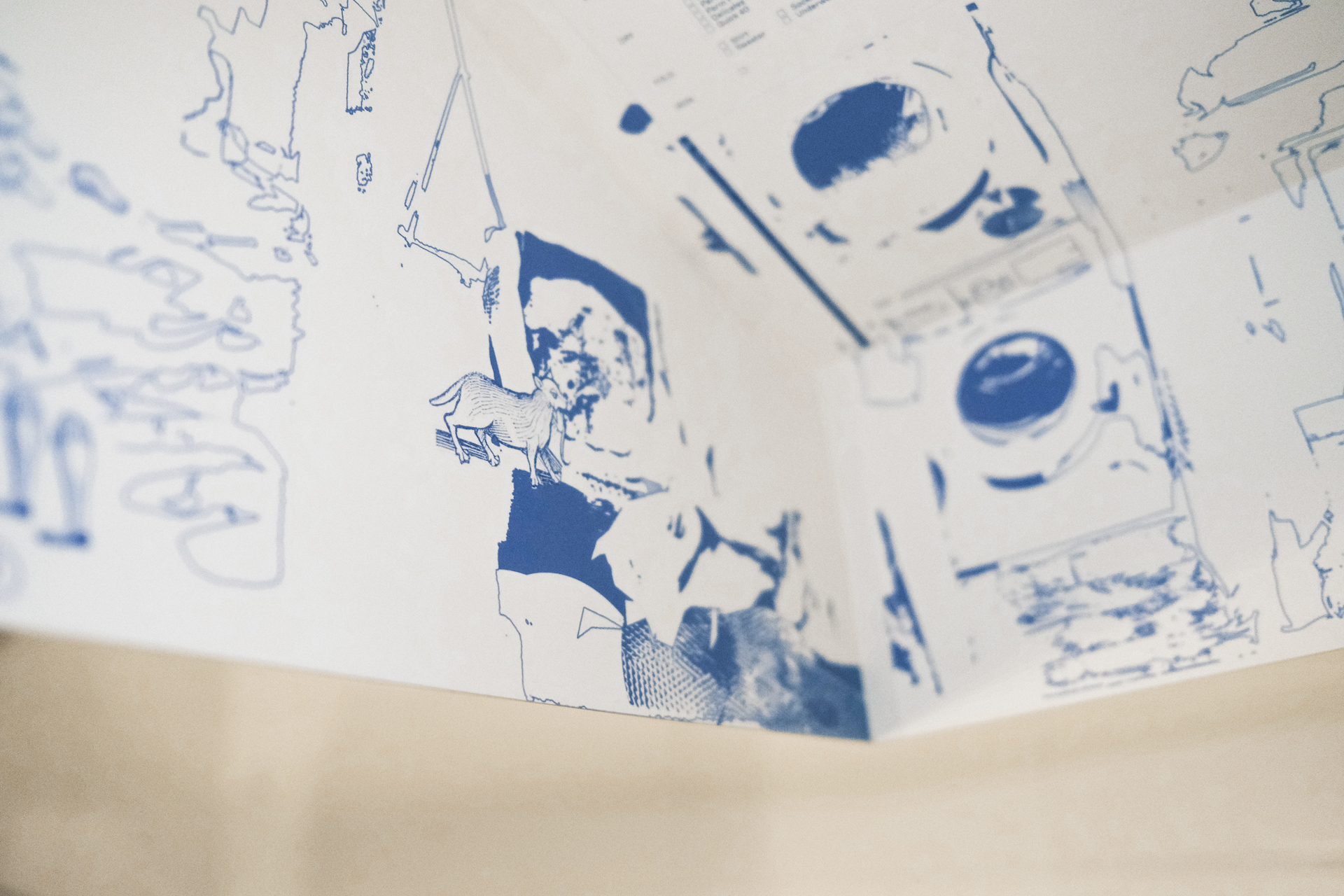
<ROOM III>
A personal narrative shed light on the silent struggles of everyday life, unveiling the challenges of everyday life and emphasizing the often-overlooked contributions of housewifery to domestic spheres.
In Room III, I shift the focus to my personal experience as a 23-year-old woman living alone, juggling a full-time design job in New York while taking on the role of a stay-at-home mom. This intimate exploration of my daily life transcends the traditional boundaries of a 9-to-6 job, revealing the constant demands and challenges of housewifery. Through the lens of my personal experience, I aim to bring visibility to undervalued tasks, showcasing the pervasive nature of these responsibilities that extend into every moment within my home. The absence of monetary compensation for this essential work prompts a critical reflection on societal norms and expectations.
A personal narrative shed light on the silent struggles of everyday life, unveiling the challenges of everyday life and emphasizing the often-overlooked contributions of housewifery to domestic spheres.
In Room III, I shift the focus to my personal experience as a 23-year-old woman living alone, juggling a full-time design job in New York while taking on the role of a stay-at-home mom. This intimate exploration of my daily life transcends the traditional boundaries of a 9-to-6 job, revealing the constant demands and challenges of housewifery. Through the lens of my personal experience, I aim to bring visibility to undervalued tasks, showcasing the pervasive nature of these responsibilities that extend into every moment within my home. The absence of monetary compensation for this essential work prompts a critical reflection on societal norms and expectations.
<3D Scanning of my room>

